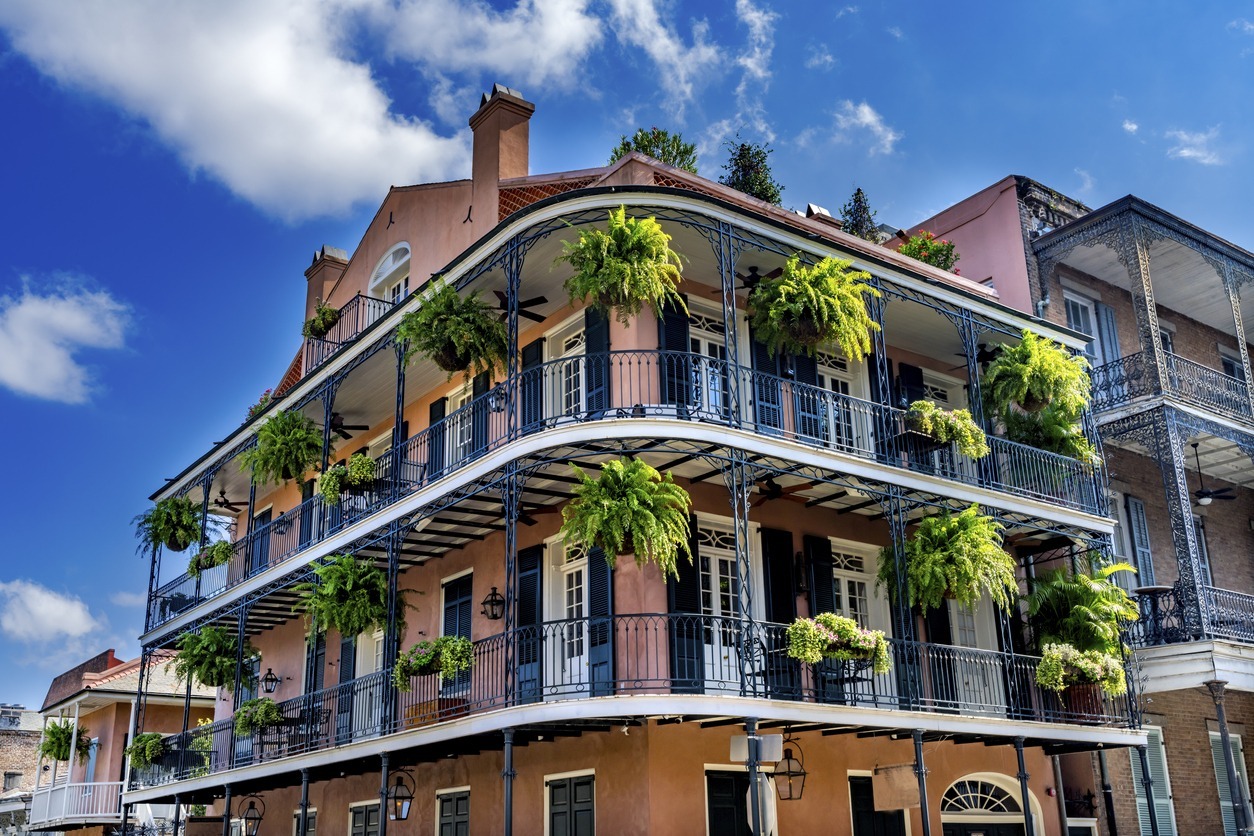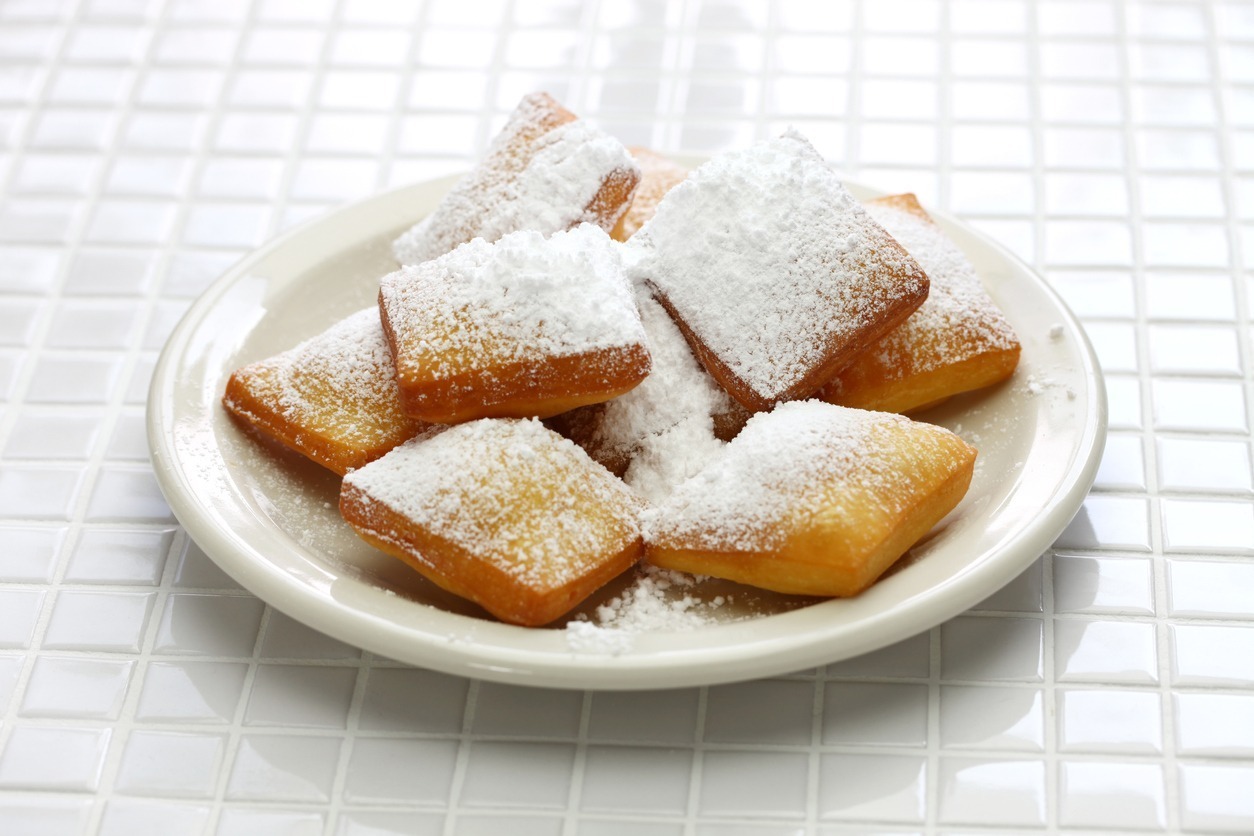New Orleans is a city like no other. It’s an American town that looks antebellum, sings Spanish, prays in Caribbean, and eats African. But one of the biggest influences in the area is the French.
Birthplace of Louis Armstrong, Reese Witherspoon, and even Star Trek’s Captain Benjamin Sisko – New Orleans is proud of its French pedigree even after France has long cut the ties and sold Louisiana to America.
But how did the French keep a strong influence in New Orleans? Here’s what you need to know to find out.
The History of French in Louisiana
Given the history of Spanish and English colonial expansion into North America, it’s easy to forget New France, which was a vast territory where the French had a stake in the New World. And the Louisiana city of New Orleans keeps much of its French-infused heritage. Many residents hold on to aspects of French and European culture that date back to colonial times, including culture, language, and cuisine.
New France – the North American territories claimed by France – once extended from Hudson Bay in present-day Canada to the Gulf of Mexico and from the Great Plains to the shores of the North Atlantic.
The French claimed what came to be known as the Louisiana Territory or “La Louisiane” in 1682. This was a large parcel of land named in honor of King Louis XIV.
The early French settlers founded the city of New Orleans after 17 years when they recognized the possibilities for shipping at the Mississippi Delta. Engineers designed the walled village and named the streets after French royalty. The streets they created and named are now the “French Quarter” section of New Orleans.
In 1762, after the French and Indian War concluded, the government of France negotiated the Treaty of Fontainebleau with their counterparts in Spain. The treaty effectively gave up the territory of Louisiana and the island of Orleans, which is now New Orleans, to the Spaniards.
The government saw this treaty as an inducement to persuade the Spanish to end the Seven-Years War. Ultimately, the French feared the British would win the war, and the French influence over New Orleans and its surrounding territory would come to a disgraceful end.
The French government kept the Treaty of Fontainebleau secret for about a year, and once the French colonists learned of it, they revolted. They didn’t want Spain ruling over them.
Meanwhile, Spain had a difficult time governing the colony. New Orleans already had a diverse population of French, Creole, and Africans (both slaves and free), and they were hindered by significant restrictions imposed on trade. The bulk of the colony’s population was resolutely French-speaking, so Spain behaved more leniently than it did with their other colonies, hoping that a more gradual approach would avoid rebellion.
However, rebellion was what they got. When they were in charge of the region, the Spaniards encountered armed uprisings and strained relations between the governor’s office and the citizenry.
In 1800, Spain handed over the Louisiana Territory and New Orleans back to France through another secret treaty, the Treaty of San Ildefonso. The Spaniards had gotten weary of governing a troublesome colony and felt threatened by the ambitious French military leader Napoleon Bonaparte.
When he was faced with a slave uprising on the island of Saint Dominique (which is now the modern-day Dominican Republic and Haiti) and a threat of a war with Britain over control of Louisiana, Napoleon chose to dispatch 20,000 soldiers to Saint Dominique to control the slave revolt. This left New Orleans and French Louisiana defenseless in the event of a British attack.
Thomas Jefferson, the President of the United States at the time, and the Secretary of State James Madison, decided to ally with the French government. Eventually, Napoleon agreed to sell the territory of Louisiana for $15 million. Known in history as the Louisiana Purchase, the deal almost doubled the size of the United States and added 13 states to the Union.
Even after the Louisiana Purchase in 1803, the city refused to give up its French heritage. The arrival of the Haitians reinforced the critical mass of French speakers in the city and delayed the Americanization of New Orleans for two generations. The French settlers took on positions of political power and wrote Louisiana law in French. At this point, the city started subdividing, with French Creoles settling in the older part of town and the Americans upriver.
French Influence in New Orleans’ Culture
The French were Catholic and not Protestant like most founders of other New World settlements. There are a lot of differences that separated the French from their Puritanical counterparts, who tended to a sober view of life. French Catholics, while religious, also enjoyed sensual pleasures. They had a flair for fine living and dining.
Embodying this spirit is the Mardi Gras, the most famous and wildest of all New Orleans festivals. This late-winter carnival famous for its street parties and raucous costumed parades is a Catholic Holiday. In French, the term “Mardi Gras” means “Fat Tuesday,” which is a time of indulgence before the self-imposed soberness of Lent.
Early in the history of New Orleans, an order of Ursuline nuns arrived to give the colony spiritual instruction and guidance. They recruited people of all races into Catholicism and solidified New Orleans’ Catholic character. This helped attract like-minded populations of immigrants that shaped the city, from Sicilians to the Irish, Haitians, and the Vietnamese.
New Orleans, which is world-famous for its food, also developed a unique French-infused cuisine. The city’s indigenous cuisine is distinctive – it’s composed of centuries of amalgamation of New Orleans French cuisines, local Creole, haute Creole, and Cajun cuisines. Local ingredients combined with French, African, Spanish, Italian, Native American, and a hint of Cuban food traditions produced a truly unique and recognizable Louisiana flavor. Their French cuisine restaurants with a Louisiana twist abound in New Orleans, including the famous Café du Monde.
Among the unique culinary specialties in New Orleans, beignets are one of the most popular. You can taste some of the best beignets in the world here. These are square-shaped fried pastries that are sometimes considered French donuts.
Today, the city has grown into a music mecca with rich African-American culture, spawning its original take on blues and jazz music in the 20th century.


